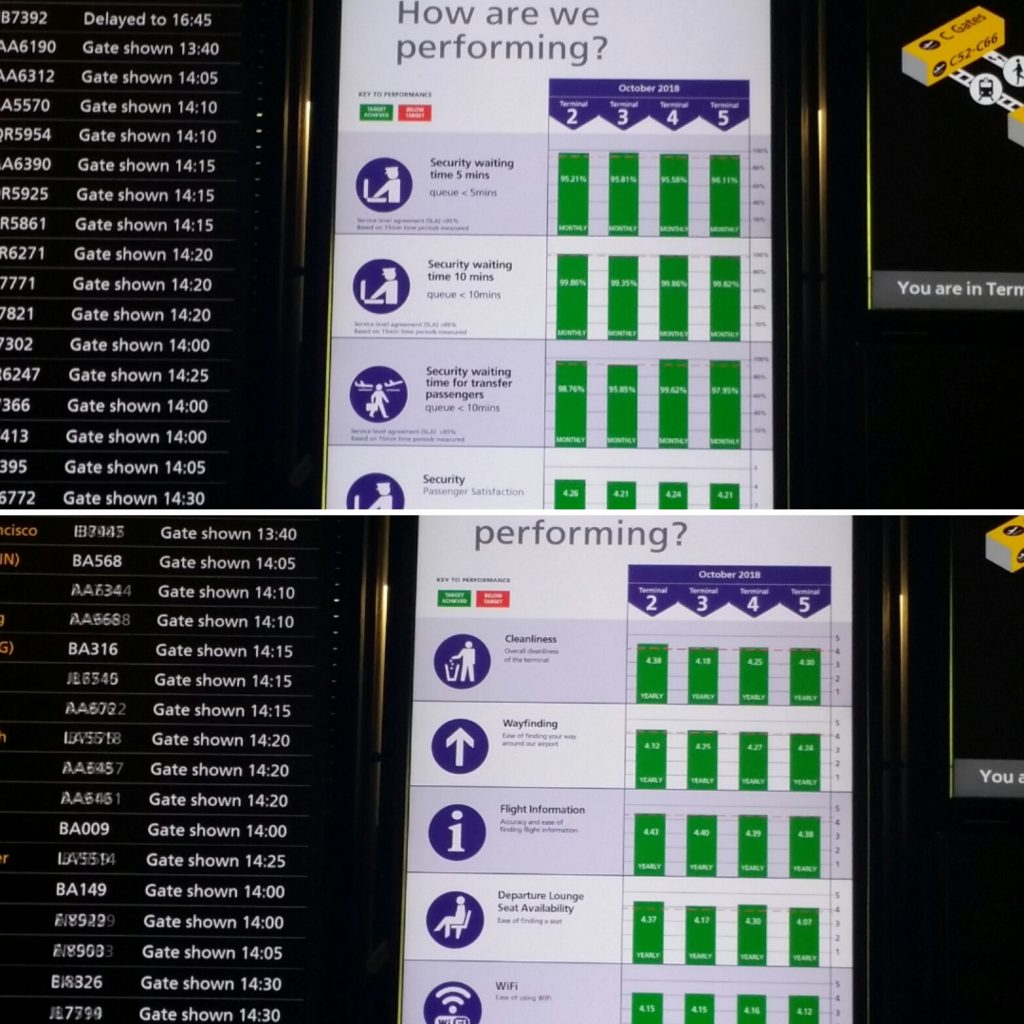A while ago, before international travel was restricted due to the global pandemic, I made my way to London Heathrow International Airport to catch a flight back home after a business trip. To cater for what I expected was going to be a long wait at the security check, I arrived at the airport well ahead of the recommended time. Heathrow Airport, after all, is reputed to be one of the world’s busiest airports in terms of passenger traffic. I wasn’t taking any chances.
Instead of the dread I expected, I was pleasantly surprised. The process was quick and smooth. It took much less time than I had anticipated. To boot, the security officers were very courteous and helpful. I wondered if I was just lucky to have arrived at a slow time.
After some inquiry, I concluded that my experience could most likely be attributed to a data-informed customer feedback system that Heathrow airport had implemented to improve service delivery. Let me explain.
The Smiley Face Terminal
While en route to the departure lounge to wait for my flight, I absentmindedly pressed one of the smiley face buttons on a terminal indicating how I felt to the question, “How was your security experience today?” Much like one would do on a social media post. I didn’t think much of it until I arrived at the lounge and looked up at the large electronic panels to locate my departure gate.
Next to lists of departing flights, each one of the electronic panels had a dashboard with bar graphs showing levels of customer satisfaction with the airport’s performance on a number of service performance targets. The bar graphs showed how each of the five terminals in Heathrow had performed in service level performance targets, such as security wait times of less than five minutes.
It was fascinating to see that all the terminals had achieved their targets 98% of the time over the month. For example, one bar graph showed that a terminal had scored 4.21 and above out of a possible high score of 5 in customer satisfaction level. I had a light bulb moment when I realized that the smiley face terminal I had just encountered was a tool for collecting feedback from travelers about their experience.
Immediately, I applied my investigative skills to find out how Heathrow came up with this tool and how it was implemented.

The HappyOrNot Innovation
An internet search of “smiley face terminal” brought up articles in the New Yorker and the Telegraph describing this innovation. I discovered that it was developed by a small Finnish startup led by a programmer called Heikki Väänänen. As the story goes, Heikki liked to give feedback to establishments he patronized, but filling out surveys was inconvenient. Apparently, he is not alone.
Heikki saw this as a business opportunity and developed the so-called “HappyOrNot” terminals. The terminals have buttons with smiley faces (made ubiquitous by social media), ranging from very happy to dissatisfied, for customers to register their level of satisfaction. They are simple to use and send data directly to people who are interested in the results.
Heathrow Airport implemented the HappyOrNot terminals to improve customer satisfaction levels ahead of the expected influx of international visitors for the 2012 Summer Olympics. They positioned HappyOrNot terminals so that passengers could use them as they cleared security. Airport executives were able identify problem locations in real time, and address the issues quickly. At the time, Heathrow security’s over-all passenger-satisfaction scores are reported to have risen by more than half.
Contrast this with the Transportation Security Administration (T.S.A.) feedback system that the New Yorker writer encountered at Palm Beach International Airport. Customers were invited to scan a QR code to inform T.S.A. of their experience. After scanning the QR code, the writer ended up with a link to T.S.A.’s general customer-service web page.
The writer then had to search for a form which required him to provide his full name and email address to create an account so he could then log in to provide feedback! Hardly the way to encourage customer feedback!
Data-Informed Decision Making
Organizational and business leaders all over the world are increasingly applying innovative ways to gather and analyze customer feedback to gain insights to improve their systems. Management scholars have called this concept organizational learning. The term “learning organization” was made popular by Peter Senge in his book The Fifth Discipline.
One characteristic of learning organizations is that they need to be able to detect and correct errors. To do this, an organization needs to be able to seek out and seriously consider feedback about the work employees are engaged in, the wider environment, and its performance.
In the past, organizations collected and then analyzed data “off-line” in order to determine corrective actions to take. Modern technology, however, has now made it possible to learn at the very moment of action.
Heathrow Airport, for example, has a key performance index of getting travelers through security in 5 minutes or less. HappyOrNot terminals have proven to be an effective tool for the officials to collect real-time data from customers on how they are performing on this service target. Actionable insights enable airport officials to pinpoint problem areas and attend to them immediately, thus increasing their competitiveness as an air transportation hub.
Data from customer feedback is not only useful in the scenario just described involving single-loop feedback – a response that tells you you need to adjust how you’re acting. Insights from data can also generate double-loop feedback – a response that tells you that your approach or strategy needs to change. Data are not only useful in detecting discontinuities between strategy and performance in the present, but also among possible visions, strategies, and specific goals for the future that an organization has.
Organizations that are going to be competitive in the fast-paced, interconnected and globalized world where large amounts of data and automation are the norm, are going to be organizations that are quick to learn and adapt at every level of the organization. Data-informed decision making is crucial for individuals, teams, organizations and larger institutions to become more capable of self-transformation with the result that they are more creative, more aware, more just, and more sustainable.
About the Author


